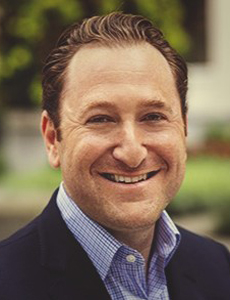At RISKWORLD 2024 in San Diego, Risk & Insurance® sat down with Marc Orloff and TJ Richter, the president of middle market and executive underwriting officer of middle market, manufacturing/wholesale, at Liberty Mutual, respectively, to discuss the key risks facing the manufacturing sector, the rise of cyber incursions, and the challenges in coverage lines for manufacturers.
What follows is a transcript of that conversation, edited for length and clarity.
Risk & Insurance: What are the key risks facing the manufacturing sector in the U.S.?
TJ Richter: Supply chain disruption is a pressing issue for manufacturers in the U.S.
Manufacturers have seen how unexpected global events have completely halted the flow of goods, causing issues with sourcing materials, geopolitical roadblocks, and price volatility. In fact, [more than] 90% of manufacturers have experienced at least a partial supply chain disruption since 2020.
As the world becomes increasingly dominated by technology, cybersecurity threats are also becoming more prevalent. With 70% of manufacturers planning to use AI by 2026 and many already implementing it in smart factories, the risk of cyberattacks is growing.
Manufacturers must also place greater emphasis on emerging issues such as PFAS, silica, autonomous vehicles, wildfire, geopolitical risk and increased litigation across all casualty lines. To address these risks, it is crucial to implement proper terms, conditions, policy structures, limits, and leverage industry expertise.
At Liberty Mutual, we are taking a granular vertical approach to our manufacturing and wholesale subsegments to effectively manage these risks for our clients and distribution partners.
R&I: Why are we seeing an increased frequency of cyber incursions in manufacturing processes?
TJR: The rise in cyber incursions in manufacturing can be attributed to the ease with which bad actors can now gain access to systems. We’ve observed a shift from primarily domestic bad actors to an increasing number of foreign ones.
TJ Richter, executive underwriting officer of middle market, manufacturing/wholesale, Liberty Mutual
I recently witnessed a cyberattack firsthand during a risk control visit to a manufacturer. The company had a fully integrated system where customers could place orders directly, which were then fed into the machinery. During our meeting, the management team had to abruptly leave to address a cyberattack that shut down all their systems, halting operations.
The cyber attacker demanded a ransom of $20,000 to restore access. Without cyber insurance, the company’s CFO determined that paying the ransom was more cost-effective than enduring the potential 2-3 weeks of downtime needed to investigate and resolve the issue independently.
R&I: What lines of coverage are currently the most challenging for manufacturers in terms of capacity and pricing?
Marc Orloff: Auto insurance remains a significantly challenged line. The issues stem from litigation, legal system abuse and inflation. We believe legal system abuse is a more accurate description of this pressing issue than social inflation.
The prevalence of law firm billboards along highways and the growth of litigation funding suggest legal system abuse will only intensify.
The challenges are compounded by factors such as fleet size, high driver turnover, distracted driving, and the quality of replacement drivers. State jurisdiction also plays a role in amplifying these issues.
Furthermore, the presence of umbrella policies sitting on top of auto coverage exacerbates the casualty exposure. This combination of factors makes auto insurance a particularly problematic line for manufacturers in the current market.
R&I: What are some of the major challenges facing businesses today, particularly for product manufacturers in certain venues?
TJR: For manufacturers that produce high-exposure products, securing adequate umbrella limits is a challenge. This issue also extends to auto industry suppliers, where obtaining higher limits has become increasingly difficult.
Furthermore, certain venues pose significant risks which are becoming more apparent. Venues in New York, Texas, Georgia, California, and Florida are particularly challenging. These risks are compounded by the increased litigation trends that Mark mentioned earlier.
R&I: What details can you provide about how Liberty Mutual works with manufacturing clients to predict or prevent losses, and what trends or programs are you utilizing in this area?
TJR: We have an increased emphasis on industrial hygiene and occupational disease prevention. While these issues have been present in the manufacturing world for a long time, claims frequency and severity are starting to rise. Claims related to hearing loss or exposure to substances like hexavalent chromium from welding on stainless steel often don’t surface for 5 to 10 years.
To address this, we have a dedicated industrial hygiene department with 25 specialists. They conduct air sampling, noise testing, workplace evaluations, and even assess ergonomics.
From a risk engineering perspective, our risk control representatives work in lockstep with underwriting. This collaboration not only helps us evaluate risks benefiting Liberty Mutual, but also assists clients in providing safe workplaces with quality controls that meet both industry and our standards as a carrier partner.
R&I: How is Liberty Mutual leveraging AI to analyze risk and support customers in maintaining safe, quality workplaces?
TJR: At Liberty Mutual, we are starting to utilize AI more extensively to analyze risk. We currently have a couple of initiatives in progress where we are employing AI to help evaluate and underwrite risk by analyzing publicly available information about the insured from various internet sources.
This approach serves two primary purposes. First, it helps us gather the necessary information to determine whether a particular risk aligns with our underwriting criteria. Second, and more importantly, it allows us to ensure that the insurer we are partnering with maintains a safe and quality workplace.
By leveraging AI in this manner, we can make more informed decisions and provide better support to our customers in their efforts to create and maintain secure, high-quality work environments.
R&I: What role do third-party data and AI play in understanding risk and claims in your business?
MO: We leverage third-party data and AI to help understand the risks we underwrite and the claims we see through our claim system.
We also use these insights on the front end with risk control to help clients effectively engineer out risks. For example, driver safety is a key focus area where we spend considerable time working with clients. Finding qualified drivers to deliver products is a major challenge for many businesses.
Additionally, we are actively partnering with our clients to address litigation system abuse. It’s critical that clients speak up to their local legislatures about this issue. It cannot be just the insurance companies advocating for change, as this problem impacts all of us. This is a significant focus for Liberty Mutual.
R&I: What challenges are manufacturers facing in terms of labor and skilled workers, and how is this impacting production?
TJR: Manufacturers are grappling with a labor shortage, which has become increasingly prevalent over the last 3 to 4 years. This shortage of skilled workers is directly impacting production and leading to a skills gap.
As manufacturing systems become more integrated and outdated processes are replaced by automation, companies are struggling to find skilled workers to fill these evolving roles. The sector itself is facing a considerable challenge in attracting and retaining the talent needed to maintain production levels.
MO: At Liberty Mutual, we are hyper-focused on enabling products that our manufacturing clients need. Whether it’s our manufacturer’s E&O or our multinational connection, clients want to know they’re comprehensively covered on all aspects that truly matter to them.
We are dedicated to producing products that serve our clients’ needs from an insurance perspective. Our aim is to provide the tailored coverage solutions manufacturers require to operate with confidence in the face of these labor and skills challenges. &
The post Detailing Manufacturing Risk: A Conversation with Liberty Mutual’s Marc Orloff and TJ Richter appeared first on Risk & Insurance.







